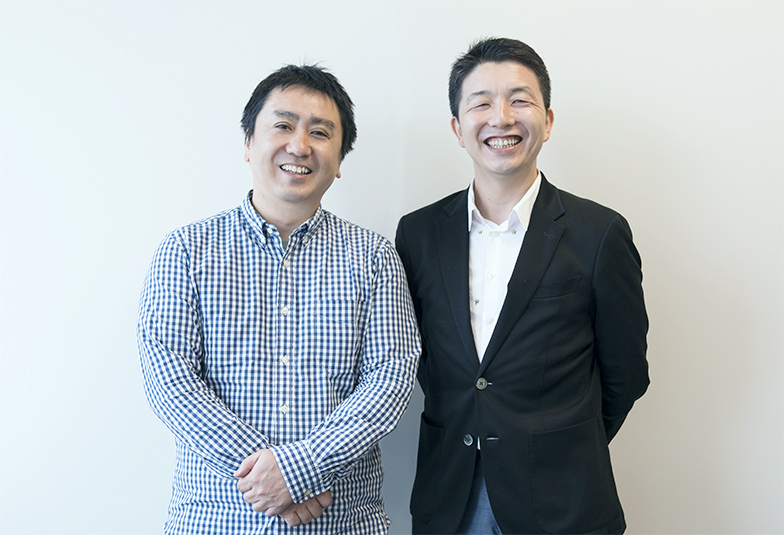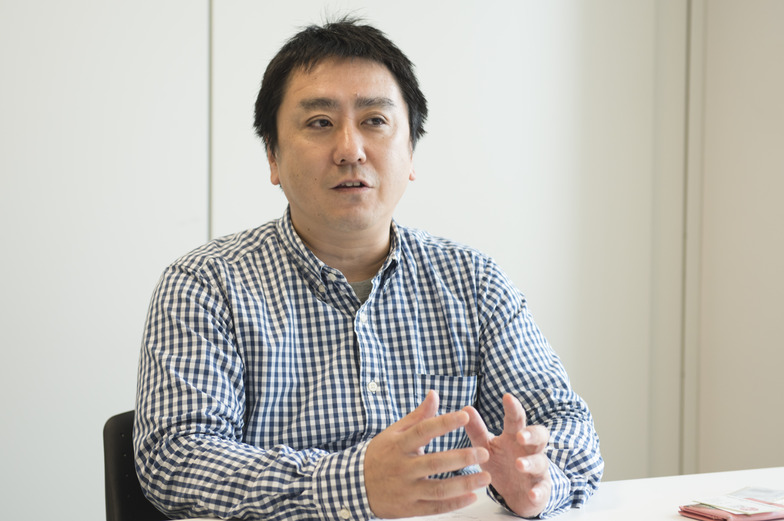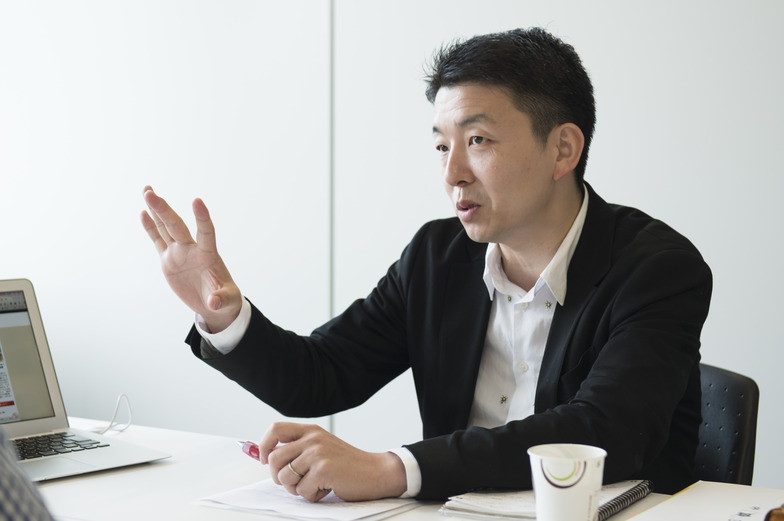As communication methods diversify, the importance of "editing skills"—the ability to process and disseminate information from a unique perspective—continues to grow. A publisher's editor and a Dentsu Inc. creator discuss the secrets behind these "editing skills," revealing their respective perspectives on the subject.
This time, Takuya Ebe, Editor-in-Chief of the magazine " dancyu," and Shigetaka Nagamatsu, Principal Researcher at Dentsu Inc. CDC involved in operating the website "Umai Mon Producer," conversed about "editing skills."
"Deliciousness" is not an absolute value. That's precisely why we focus on storytelling.
Nagamatsu: I currently manage a community site called "Umai Mon Producer." We introduce local producers of "delicious foods" on the site, where 65,000 "Delicious Food Producers" nationwide provide direct advice. By incorporating an outside perspective, we aim to create a cycle where products become more appealing and producers gain supporters who buy and champion their goods. Lately, my life involves traveling around regional areas, constantly searching for delicious foods. I feel dancyu is a senior pioneer who has been doing this for a quarter-century.
With so many restaurants and foods out there, does dancyu have unique criteria or methods for selecting them?
Ebe: People often envy our lifestyle of eating and drinking late into the night. They tell us, "You're getting fat because you eat nothing but delicious food!" (laughs). But honestly, this is our job—we're not getting fat because we like it!
Anyway, regarding our criteria for selecting restaurants and products, we actually don't place that much emphasis on "deliciousness" itself. To put it bluntly, our mindset is more like "as long as it's not bad." Because even if everyone says a place is delicious, if you're feeling under the weather or going with someone you dislike, it might taste bad. When you think about it that way, deliciousness isn't actually an absolute value. So, we don't feature places based solely on deliciousness. What we prioritize is the story behind the shop, the passion and dedication of the people making the food. These are unshakable elements, and that's what we want to convey.
Nagamatsu: I even wonder if "delicious" is just a given these days. What's more important is how much story lies behind that "delicious."
However, creators often take their dedication and effort for granted, thinking it's just "what they should do," and don't emphasize it. As a result, stories that could spark everyone's interest remain hidden and overlooked. What's truly fascinating isn't the product's specs, but the people's motivations and thoughts. That's precisely why we want to uncover them.
Ebe: For us, a strong focus in creating the magazine is "making something different from the internet." We aim to create value by putting information on paper that you can't find through online searches. In that sense, because the editorial staff have relationships with the shops and creators, we use that as a starting point. We go out and visit, drawing out those "buried" obsessions and stories that won't show up in a search.
Nagamatsu: "Finding things you can't search for" is really fascinating. I feel that's a perspective unique to magazine editors. When you delve into regional areas, you see how ingredients, cooking methods, weather, geographical conditions, and history all combine. Even with similar backgrounds, completely different things emerge in each region. Things akin to a certain culture simply don't show up in search results. The ability to find those things is, I suppose, a form of editorial skill.
Design and humor to make it accessible
Nagamatsu: Beyond selecting information, what do you consciously focus on when designing the pages? For example, I heard dancyu underwent a version upgrade in January 2013—could you share what you prioritized then?
Ebe: We were absolutely desperate during the upgrade, but what I focused on was how well we could present the photos, design, and illustrations. Since people are reading less text these days, we prioritized visuals.
But even with that visual focus, we made sure it wasn't "too stylish." Since it's a food magazine, being too stylish makes it feel a bit distant for readers. So we consciously kept it a little rough around the edges. That commitment continues today.
Nagamatsu: That "not too stylish" thing is really impressive. Take the cover of the curry feature (August 2015 issue), for example. It's just perfect. That illustration of a paper carton labeled "Drinkable Curry" (laughs). It's so packed with detail, it almost feels like it could be real. Inside, the little photos and illustrations are super cute too. The humor really works, doesn't it?
Ebe: Personally, I absolutely want to include humor. As I mentioned earlier, it's an era where people don't read text easily, and dancyu is also a high-priced magazine. It can sometimes give the impression of only featuring high-end restaurants. That's precisely why I want to "make it as accessible as possible." As a means to that end, I'm particularly particular about the cover visuals and humor. I've put the designer through quite a lot. For the curry special issue cover alone, I had them come up with about 50 different versions...
Nagamatsu: Fifty versions! Wow! That must have been tough for the designer... There's this solid foundation of deep concepts – stories and obsessions you won't find through a simple search – while also meticulously focusing on visuals and humor, and making thoughtful efforts to make it appealing to readers. The passion for "creating something" through editing is packed into every single issue of dancyu.
When planning features, we judge based on whether it would appeal to just one person
Nagamatsu: dancyu has been published for 25 years. Maintaining such longevity must present significant challenges in production. You must carry forward the history while also creating something new. I sometimes even think, "Starting from scratch might actually be easier."
Ebe: That's true. Because of its long history, we have readers who've been with us since the beginning, those who joined later, and new readers—the reader base is incredibly complex. Generations vary, and we might even hear the common sentiment, "Things were better back then."
Nagamatsu: Within that, how do you maintain contact with readers? How do you try to understand their needs and interests?
Ebe: We do look at postcards and surveys, but honestly, I don't focus that much on readers. I might get scolded by the president for saying this (laughs). Sure, if asked about our target reader, I might say "men in their 40s." But even among men in their 40s, there are differences based on where they live, their upbringing, and their current circumstances. You can't lump them all together. In fact, it just makes things more blurry.
Nagamatsu: I see. So then, as editor-in-chief, what criteria do you use to give the green light to a feature? Where do you draw the line when deciding, "Let's go with a curry special this time"?
Ebe: My criteria for deciding on a project start with imagining one specific reader. Or rather, one person I know personally. I think, "Would this project interest that guy?" For the curry special issue (August 2015), it started with, "Come to think of it, that photographer really liked curry. Would he enjoy a curry feature like this?" That was the starting point. Then, for the surrounding articles, I'd think, "He liked Sri Lankan curry, but what other kinds of curry would he enjoy?" and expand from there. So, the initial criterion is one person. Whether that person would enjoy it is the starting point for the feature.
Nagamatsu: When I first joined the company, Reiko Kojima, a freelance copywriter who taught me the ropes, told me, "When writing copy for high school girls, don't think in terms of 'what would appeal to the mass audience of high school girls.' You need to awaken the high school girl within yourself!" What you're saying about "starting with one person" really resonates with that idea of "not thinking in terms of the mass audience."
Ebe: I'm glad to hear you say that. Also, since dancyu is a magazine with over 100 pages, even if the starting point is a single person's idea, when we expand it to fill an entire issue, I hope there's something in there that resonates with each individual reader. I want readers of all generations to find at least one thing that catches their interest.
Not putting things into words led to shared imagery and sensibilities
Nagamatsu: How do you share that unique sense of planning and design quality – that "Ebe-san touch" – across the entire editorial team? Does the team have any specific methods for that?
Ebe: I'm really bad at that... I don't have many words for it. When staff ask me what's wrong with a concept or design, I just say, "Well, it doesn't click for me." That's always my response. Ideally, I should be able to explain it logically, but I've gotten this far without being able to. Still, maybe because I couldn't put it into words, the staff have come to understand it intuitively.
Nagamatsu: I'm the opposite—I tend to say too much. But if I specifically point out, "I think this part is bad," then everything just gets focused in that direction. Sure, it's accurate, but often it doesn't resonate. Thinking about it that way, not putting things into words might actually be incredibly important.
Ebe: Personally, I wish I could explain things a bit more verbally. When asked how I give revision instructions, I end up saying, "I don't know either..." I just decide things intuitively. I even told the staff, "I change my mind constantly, and if something interests me, I move on immediately. So please don't get too worked up over it" (laughs).
Nagamatsu: Wow, that's refreshingly honest. It takes real courage to admit that. But perhaps it's precisely because you share that "importance of not putting things into words" that you can communicate such broad and deep imagery with so many people. This feels like the secret art of "editing skill." Sometimes, not putting things into words actually allows you to convey more to more people. It makes me want to reflect on my own tendency to talk too much...
Thank you so much for today.
<End>







